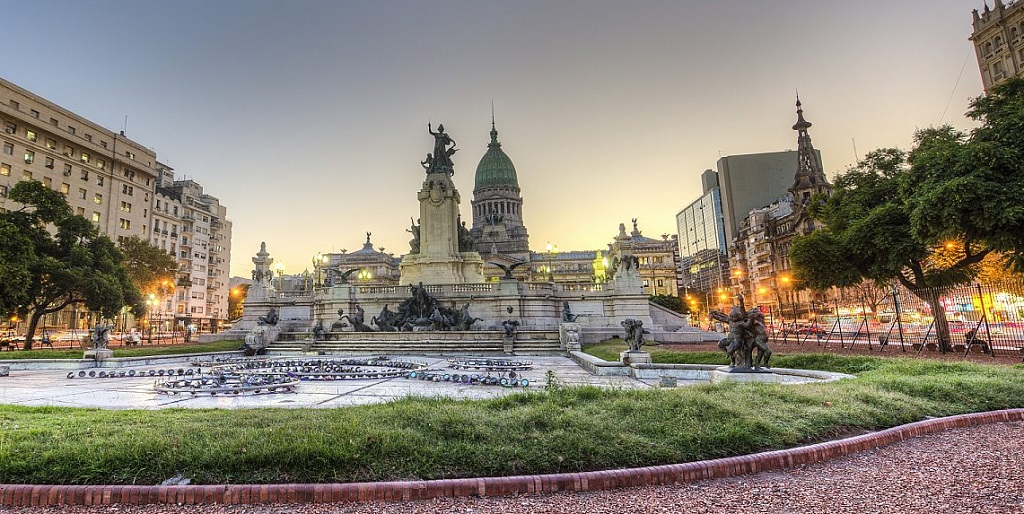
The world’s eighth largest country by area, Argentina’s diverse landscape and unique culture offers plenty to both the casual tourist and the serious explorer. Best known perhaps as the home of Che Guevara, Yerba Mate and street-side Tango, the country whose inhabitants consume more red meat than any other nation on Earth, also has a growing reputation as a serious wine producer.

Over the last thirty years, Argentina’s wine industry has transformed its philosophy from one of quantity-driven production for the domestic market - based largely upon the cultivation of the naturally high-yielding varieties, Criolla and Cereza - to a carefully focused operation that prioritises the quality of the grape yield and of the subsequent wines. Export markets which were previously unaccessible to Argentine winemakers, are now flooded with examples of rich, intense wines from the nation’s approximately 230,000 hectares of vineyard. These range from good value everyday reds to velvety smooth [Bordeaux-esque](/region/bordeaux) blends and multi-award-winning varietals. Wine production in Argentina dates back to the mid 16th century, but it wasn't until around four-hundred years later that a number of [French](/country/france) varieties were first introduced, amongst them the grape which has become the country’s flagship. Reds dominate here, and [Malbec](/malbec) - the nation’s adopted son - accounts for a huge slice of all dark-skinned plantings. Other prominent grapes include Bonarda, [Cabernet Sauvignon](/cabernet-sauvignon), [Syrah](/syrah), [Merlot](/merlot), [Pinot Noir](/pinot-noir) and [Tempranillo](/tempranillo), as well as a number of less well-known indigenous varieties. White grapes, although not as widespread as reds, are still numerous in range. Torrontés - a native variety which delivers fresh, aromatic wines, is perhaps considered the country’s ‘signature blanc’ and there are also notable plantings of [Chardonnay](/chardonnay), [Sauvignon Blanc](/sauvignon-blanc), [Chenin Blanc](/chenin-blanc) and the declining Pedro Gimenez - historically important for delivering simple wines in some quantity. The world’s largest Spanish-speaking country, Argentina is a land of remarkable contrasts. The landscape alone ranges from the swampy flats of the Chaco province, to the fertile plains of the Pampas, and the breathtaking natural beauty of Patagonia and the Andes mountains. The capital, Buenos Aires, with its stately architecture, colourful La Boca district, and elegant European style, is South America’s most visited city; tourists flock here to marvel at the city’s imposing buildings (such as the Palacio de Aguas Corrientes), to visit the Recoleta cemetery, to be swept away by the vibrant cultural life or simply to indulge in a fine steak accompanied by an equally exquisite glass of red. And yet the country itself has one of the lowest population densities in the whole world. Its climate too is a tale of extremes, demonstrated by its having recorded both the highest and lowest temperatures on the continent within its national bounds. It comes as no surprise then to learn that Argentina’s wine landscape also reflects this diversity. The country's wine producing area is divided into six main regions of which [Mendoza](/region/mendoza) - at the foot of the Andes, is by far the largest in terms of production, and the most well-known. The vineyards of this region occupy altitudes up to one-thousand-four-hundred metres above sea level and subsequently benefit from a micro-climate which moderates extremes in temperature, affords intense exposure to sunlight and allows grapes to develop slowly (due to the stark difference in temperatures during the day and at night), thus increasing their flavour compounds whilst maintaining that all-important acidity. Completing the excellent terroir, the soils of this mountainous region are alluvial, free-draining and rocky, producing wines with a good tannic structure. Whilst [Mendoza](/region/mendoza) is responsible for more than two thirds of Argentina’s area under vine, a number of other region’s are rising to prominence. These include Salta - famed for containing the highest altitude vineyard on the planet, and Cafayate (Calchaqui Valley) in the north west of the country, whose harmonious, full-bodied reds and crisp, fragrant whites are beginning to make gentle waves on the international wine scene. Having risen rather rapidly through the ranks, Argentina is now the fifth most productive wine nation and one of the new world's most significant players.